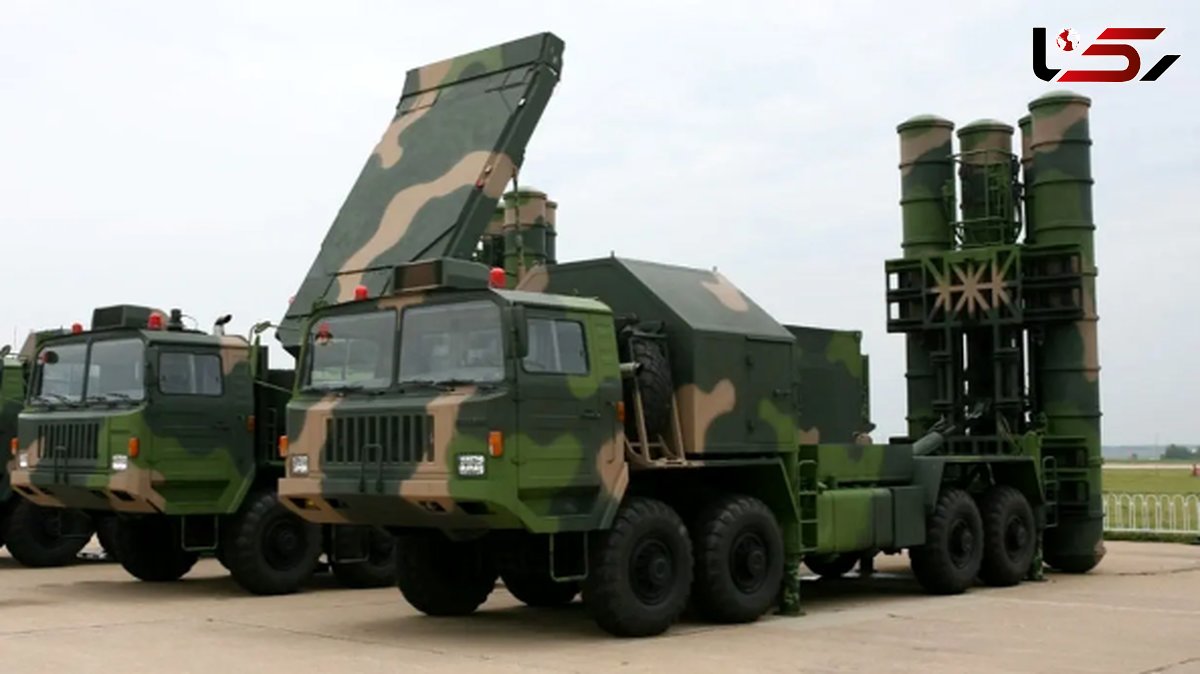Comprehensive Overview of the HQ-9 Air Defense System: An Unmatched Power in Aerial Defense
Rokna Political Desk: The Chinese HQ-9 air defense system, regarded as one of the most advanced anti-aircraft platforms in the world, is being widely deployed in Iran, according to a member of the Iranian Parliament’s National Security Commission. This deployment is expected to play a crucial role in strengthening the country’s air defense amid rising regional and global tensions.

Abulfazl Zohrevand, a member of the National Security Commission, recently stated that the Chinese HQ-9 system is entering Iran extensively as a new defender of the Iranian skies.
According to Fararu, this statement comes as tensions with the West escalate over Iran’s nuclear program, prompting Tehran to reach the highest levels of readiness to counter potential threats. But what characteristics make the Chinese missile defense system HQ-9 a chosen solution for Iran’s aerial protection?
The HQ-9 air defense system (meaning “Hongqi-9” or “Red 9”) is one of the world’s most advanced long-range air defense systems, developed by the People’s Republic of China. Often referred to as the FD-2000 in its export version or HHQ-9 in its naval version, it draws upon Russian technologies (such as the S-300) and elements from American systems (like the Patriot), but it is entirely a domestically produced Chinese platform.
Developed from the 1990s, the HQ-9 officially entered service in 2001. It is designed to counter aircraft, cruise missiles, tactical ballistic missiles, and even satellite targets, playing a key role in China’s defense strategy. This report examines the system’s history, technical specifications, features, variants, components, and operational applications.
History and Development
Development of the HQ-9 began in the late 1980s to meet the People’s Liberation Army’s need for an advanced, indigenous air defense system. The project was led by the China Aerospace Science and Industry Corporation (CASIC) and the China Precision Machinery Import-Export Corporation (CPMIEC). While influenced by the Russian S-300PMU, the system also incorporated American MIM-104 Patriot technologies (likely via Israeli or German intermediaries) and Israeli innovations in radar and seeker heads.
Operational testing began in 1997, with the initial version (HQ-9A) tested in 1999 and entering service in 2001. Subsequent upgrades, such as the HQ-9B in 2014, extended its range and ballistic missile defense capabilities. The FD-2000 export variant was unveiled in 2009 at the African Aerospace and Defense Exhibition in Cape Town. Development continued with anti-satellite and ballistic missile intercept capabilities, such as the HQ-19. Reports indicate HQ-9B was deployed on artificial islands in the South China Sea in 2016 and tested in harsh weather conditions in 2021.
Technical Specifications
The HQ-9 uses a two-stage, solid-fuel surface-to-air missile capable of speeds exceeding Mach 4 (approximately 1,200 meters per second). Key specifications include:
-
Missile length: 6.8–9 meters (variant-dependent)
-
Diameter: Stage one 700 mm, stage two 560 mm
-
Total weight: ~2,000 kg
-
Warhead: 180 kg high-explosive fragmentation (HE-FRAG) with proximity fuse, 35-meter blast radius, activated within 5 km of target
-
Operational range:
-
Original model: 6–120/200 km
-
B model: 260–300 km
-
-
Flight altitude: 500 m minimum, 30–50 km maximum (variant-dependent)
-
Propulsion: Dual-stage solid-fuel rocket motor with low-smoke HTPB fuel (in newer versions)
These specifications make HQ-9 a versatile system capable of intercepting targets at all altitudes, day or night, and in all weather conditions.
Features
-
Ballistic missile defense: Intercepts tactical ballistic missiles in the terminal phase (30–40 km for HQ-9A, up to 500 km for HQ-9B)
-
Anti-satellite (ASAT): Capable of targeting space-based assets
-
Anti-radiation (ARM): FT-2000 variant for destroying airborne radar and emitting targets
-
High mobility: Launchers based on 8×8 Taian TA5380 or 10×10 TAS5501 trucks with rapid deployment and hydraulic stabilizers
-
High probability of kill: Enhanced lethality due to fragmentation warhead and precision guidance
A standard PLA battery includes 48 launchers (192 missiles), a command center, six target acquisition radars, six fire control radars, six search radars, and supporting communications and power systems.
Variants
| Variant | Description | Range | Key Features |
|---|---|---|---|
| HQ-9A | Initial version, service 2001 | 120 km | Semi-active radar guidance |
| HQ-9B | Upgraded, IOC 2014 | 260–300 km | Passive IR seeker, 50 km altitude |
| HQ-9C | Ballistic missile defense | – | Narrower missiles (8 per launcher), terminal phase intercept |
| HHQ-9 | Naval | Similar to HQ-9 | Vertical launch from ships |
| HQ-19 | Ballistic/ASAT | – | Similar to US THAAD, mid- and terminal-phase intercept |
| FD-2000 | Export | 125 km | Anti-stealth, YLC-20 radar |
| FD-2000B | Export upgraded | 250 km | Extended range |
| HQ-9P | Custom for Pakistan | 125 km (air), 25 km (cruise) | Entered service 2021 |
| FT-2000 | Anti-radar | 1,200 m/s | Passive radar guidance |
Operators and Operational Use
Besides China, which fields hundreds of PLA batteries, key operators include:
-
Pakistan: HQ-9P, commissioned October 14, 2021
-
Morocco: 4 FD-2000B batteries, delivered 2020–2021
-
Turkmenistan, Uzbekistan, Egypt: export variants
Operational deployments include Hotan (near Kashmir) in 2015 and Woody Island (South China Sea) in 2016. China uses the HQ-9 to secure disputed borders, and its ballistic missile defense tests have been successful.
Send Comments